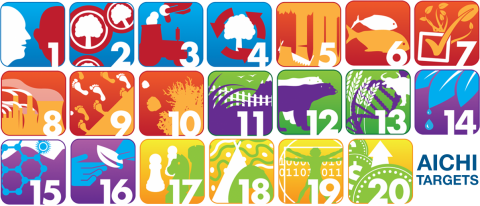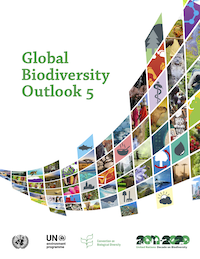Informing policy
The LPI played a pivotal role in measuring progress towards the 2010 target of the Convention on Biological Diversity (CBD) to reduce the rate of biodiversity loss which, according to the suite of 2010 biodiversity indicators, was not met.

In response, the 193 nations of the CBD committed themselves to a revised Strategic Plan for Biodiversity, including the Aichi Biodiversity Targets , for the 2011-2020 period including actions which will “…take effective and urgent action to halt the loss of biodiversity in order to ensure that by 2020 ecosystems are resilient and continue to provide essential services, thereby securing the planets variety of life, and contributing to human well-being, and poverty eradication”.

The 2020 targets focus on maintaining ecosystem services in which biodiversity plays an important role. The Living Planet Index was an applicable indicator for many of the Aichi Biodiversity targets under Strategic Goals A-D which addressed the causes, pressures, state and benefits of biodiversity. The Global Biodiversity Outlook 5 (GBO-5), published in 2020 by the Convention on Biological Diversity (CBD), established that, although 89% of all national targets saw at least some progress, not one goal was met completely.
The LPI has been included as a component and complementary indicator in two goals and four targets of the Kunming-Montreal Global Biodiversity Framework agreed at the 15th Conference of Parties for the Convention of Biological Diversity (CBD COP15) in Montreal in December 2022, a landmark agreement to halt and reverse biodiversity loss by 2030. Two years on, and global leaders are due to meet again at COP16 in Colombia. They will need to present their national strategies and action plans showing how we will meet these commitments. These national strategies are vital for moving from ambitious promises to reality – and we must see a scaling up of action, a focus on solutions that work for nature, people, and climate, and intent to meet commitments to double international nature finance by next year.
National LPI development
The LPI method is applicable at different scales, including at country level. National indices have been produced for Canada, Netherlands, Uganda, Belgium, Austria and are in development for Indonesia.
Data from the LPI portal can be accessed by countries and supplemented with their own data if appropriate. Data are available for 199 countries and dependencies (161 are Parties to the CBD) and the amount of data varies for each country – see LPI National Portal for more details.
The second version of guidelines for national applications of the Living Planet Index has been produced (Marconi and McRae 2021). This technical document provides detailed steps to collecting and analysing data through to interpretation and diagnostics and is available here. A manuscript outlining the national application of the LPI using the example for Canada has recently been published (Marconi et al, 2021).

